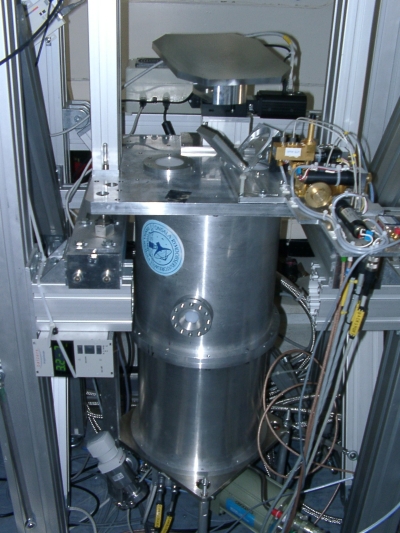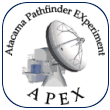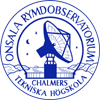APEX-2A receiver

Overview
The APEX 345 GHz heterodyne receiver (delivered by GARD at Onsala Space Observatory, Chalmers, Sweden) was commisioned during the summer of 2005. The first regular observations took place during the fall at 2005. It is operating in double sideband (DSB) mode with an intermediate frequency (IF) of 6 GHz and its tuning range is 279 GHz to 381 GHz. The DSB receiver temperature (about 60-70 K) is fairly constant over the entire tuning range. The telescope beam size at 345 GHz (image band at 357 GHz) is determined to 17.5”. The tuning of the receiver is done remotely . The following picture shows the receiver on the telescope. To see a picture of the mixer block and cold LNA, click here. The receiver and telescope optics can be found here.
Related Links:
Observing modes
Switch modes
- Position switching
In position switching mode the telescope moves between the ON-position and a user-defined reference position. Since APEX can move fast, reasonably stable baselines can be achieved under normal weather conditions. The reference position can be given in relative coordinates (to the catalog source position) or in absolute coordinates, in the horizontal or equatorial system. Integration times at ON- and OFF-positions can be different, and a number of different ON-positions can be observed using one OFF-position. - Beam switching
By using the wobbling secondary it possible to switch rapidly between positions up to 5 arcmin apart on sky without moving the antenna. - Future switch modes (not yet implemented)
- Frequency switching
- Position switching
Observing patterns
- On-Off
Observations of a single position in any of the available switch modes. - Raster map
In raster mapping the telescope moves through a grid defined by the user, and any of the available switch modes can be used. The extent of the raster map is specified and spacings between raster points are also specified. The coordinate system can be either equatorial (RA and Dec) or horizontal (Az and El). The number of observed points per reference point can be specified (with automatic adjusting of integration times in the reference point). Calibrations can be performed during a raster map. - On-The-Fly mapping (OTF)
The On-The-Fly mapping procedure allows to scan continuously along one direction in a rectangular map while writing out data after given time intervals, thus saving the overhead between subscans that occurs for rasters. Otherwise the parameters are identical to that of the raster. The spacings along the scanning axis should thus not exceed about one third of the beam to avoid beam broadening. Due to technical reasons currently an OTF integration time of exactly one second is recommended. Please note that the APEX 2a observing time calculator is not yet prepared for OTF observing time estimates.
- On-Off




